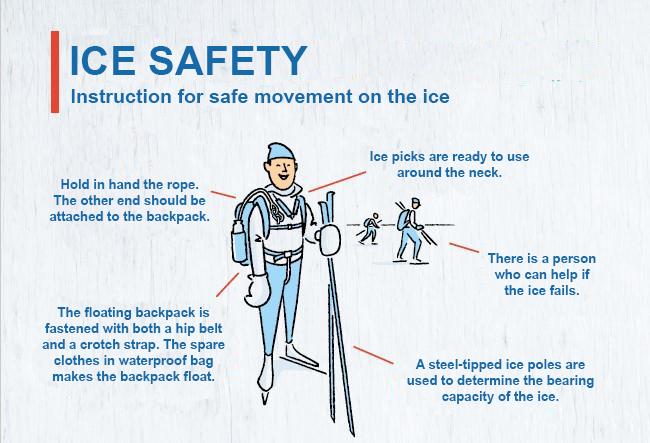Ice safety
The natural ice starts for skating usually in late October until almost May Day (1st May). Ice skating is not the challenging sport, however, it requires the basic skills. Before go ice skating, remember five things:
- Make sure the ice is sufficiently thick
- Learn to identify hazards
- Equip yourself properly
- Learn how to use nascal (ice picks)
- Always go with another person
MUST-HAVE EQUIPMENTS
- Nascal (ice picks)
- Spare clothes in an waterproof bag
- Ice poles
- Throwable rope

Teach the children the ice safety above!
Debilitating effects on the ice
The ice in windy weather is more fragile than in the calm weather. The snow also slows down the ice formation. When the snow become heavy, it can push the ice down to the water. When the cracks occur, even if they do not extend through the large surface, the bearing capacity of floating ice reduce. The ice on sea is more brittle than on the freshwater e.g., lakes. The temperature variation between the lower and upper surfaces might shrink the ice.
Hazards
Due to the flow of water, the danger areas include rivers, lake bottlenecks, ranges of rocks, headlands, rivers' and streams' estuaries. Also the lake shores that get deep suddenly are dangerous. Residential area and industrial areas pipes can be found that weaken the ice due the flow of warm water inside the pipes.
Bridges, piers, and ships also weaken the ice beneath and around them. In the areas of fair lanes, cracks, and embankments, the bearing capacity of ice has decreased. The reeds make the ice a sieve and brittle. Snow snagging at the fracture thins the ice and can sometimes even melt it completely.
.jpg)